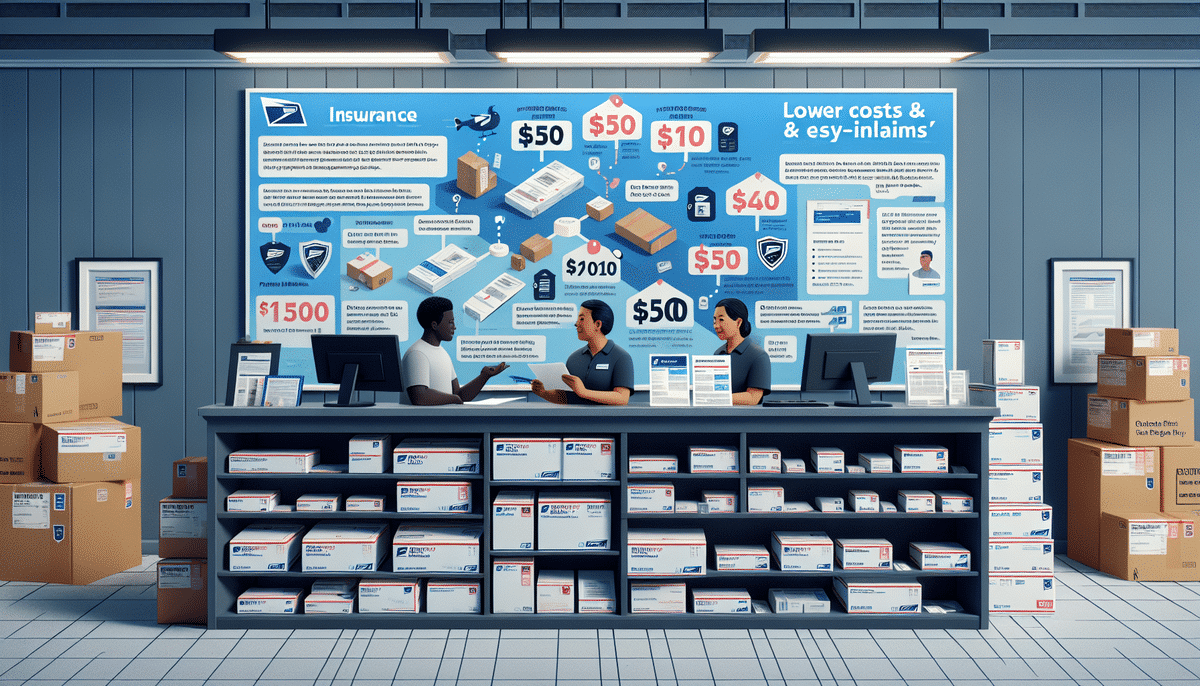Understanding USPS Insurance Rates
When shipping packages, ensuring their safety and security during transit is a top priority for many individuals and businesses. The United States Postal Service (USPS) offers various insurance options to protect your items, whether you're sending them domestically or internationally. This article delves into USPS insurance rates, coverage options, cost-saving tips, and the claims process to help you make informed decisions about safeguarding your shipments.
Why You Need USPS Insurance for Your Packages
Shipping inherently involves risks such as loss, damage, or theft. USPS insurance provides financial protection against these uncertainties, ensuring that you can recover the value of your items if something goes wrong. This is especially important for high-value or fragile items like electronics, artwork, or jewelry, which require additional security beyond the standard carrier liability.
- Peace of Mind: Knowing your package is insured allows you to ship with confidence.
- Financial Protection: Compensation for lost or damaged items up to the insured value.
- Extended Coverage: Protection for items not fully covered by USPS's standard liability.
USPS Insurance Options and Coverage
USPS offers several insurance options tailored to different shipping needs. The coverage limits and rates vary based on the service selected and the declared value of the package.
- First-Class Mail: Includes up to $100 of insurance coverage at no extra cost, ideal for lightweight and low-value items.
- Priority Mail: Offers up to $50 or $100 of insurance coverage, depending on the destination, suitable for medium-value parcels.
- Priority Mail Express: Provides up to $500 in insurance coverage, ideal for expedited and high-value shipments.
- USPS Retail Ground: Includes up to $100 in insurance coverage for most domestic shipments, suitable for larger but less urgent packages.
For international shipments, coverage amounts vary by destination country, and it's essential to consult the USPS International Mail Services for specific details.
Calculating and Reducing Your USPS Insurance Costs
USPS insurance rates are primarily based on the declared value of your package. The cost starts at $2.75 for items valued up to $50 and increases incrementally with higher declared values.
- Declared Value: Accurately declaring the value ensures appropriate coverage and avoids overpaying.
- Packaging: Secure and proper packaging can reduce the risk of damage, potentially minimizing the need for higher insurance coverage.
- Flat Rate Boxes: Utilizing USPS Flat Rate boxes can simplify shipping costs and often include free insurance depending on the service.
- Online Shipping Services: Platforms like EasyPost or FedEx Shipping may offer discounted insurance rates.
Filing Claims for Lost or Damaged Packages
If your package is lost or arrives damaged, filing a claim with USPS is straightforward. Claims can be submitted online through the USPS Claims Center or at a local USPS office. It's crucial to file claims within the specified time frames, which vary based on the service used:
- Domestic Claims: Typically must be filed within 60 days of the shipment date.
- International Claims: Deadlines may vary by destination country, so consult the USPS guidelines.
Ensure you have all necessary documentation, including the original receipt, proof of value, and any evidence of damage, to expedite the claims process.
Comparing USPS Insurance with Private Carriers
While USPS provides reliable and cost-effective insurance options, it's worthwhile to compare them with offerings from private carriers like FedEx or UPS:
- Coverage Limits: Private carriers may offer higher maximum coverage limits compared to USPS.
- Premiums and Deductibles: Private insurance often comes with higher premiums and may include deductibles, affecting overall cost-effectiveness.
- Specialized Services: Some carriers offer tailored insurance for specific industries, such as technology or pharmaceuticals.
- Tracking and Support: Evaluate the quality of tracking services and customer support when choosing an insurance provider.
For an in-depth comparison, refer to the Consumer Reports comparison of shipping carriers.
Limitations and Exclusions of USPS Insurance Policies
USPS insurance policies have specific limitations and exclusions that are important to understand:
- Maximum Coverage: Domestic insurance caps at $5,000, while international caps vary by destination.
- Excluded Items: Perishable goods, live animals, hazardous materials, and cash are typically excluded from coverage.
- Packaging Requirements: Damage resulting from inadequate packaging may not be covered.
- Ineligible Negligence: USPS is not liable for delays, theft after delivery, or items lost due to customer negligence.
Always review the USPS Insurance Terms and Conditions to ensure compliance and understanding of what is covered.
Best Practices for Packing, Labeling, and Tracking Your Packages
Proper packing and labeling are essential for safe and timely delivery:
- Use Sturdy Materials: Opt for strong boxes and cushioning materials to protect items.
- Seal Securely: Ensure all seams are sealed with high-quality packing tape.
- Accurate Labeling: Clearly write the destination address and include a return address.
- Include Necessary Documentation: For international shipments, complete all required customs forms accurately.
Additionally, use USPS's tracking services to monitor your package's journey. Regularly checking the tracking status can help you address any issues promptly.
Frequently Asked Questions About USPS Insurance
- How are insurance rates calculated? Rates are based on the declared value of the item, starting at $2.75 for up to $50.
- What types of items are covered by USPS insurance? Most physical goods are covered, excluding perishable items, live animals, hazardous materials, and cash.
- Can I purchase insurance for international packages? Yes, USPS offers insurance for international shipments with coverage limits varying by country.
- How long do I have to file a claim? Typically within 60 days for domestic shipments, but it varies for international shipments.
For comprehensive answers, visit the USPS FAQs page.
Conclusion
USPS insurance is a valuable service for anyone looking to protect their shipments from unforeseen events during transit. By understanding the various insurance options, coverage limits, and the claims process, you can make informed decisions that align with your shipping needs. Additionally, implementing best practices in packing and labeling can further ensure the safe delivery of your packages.






















